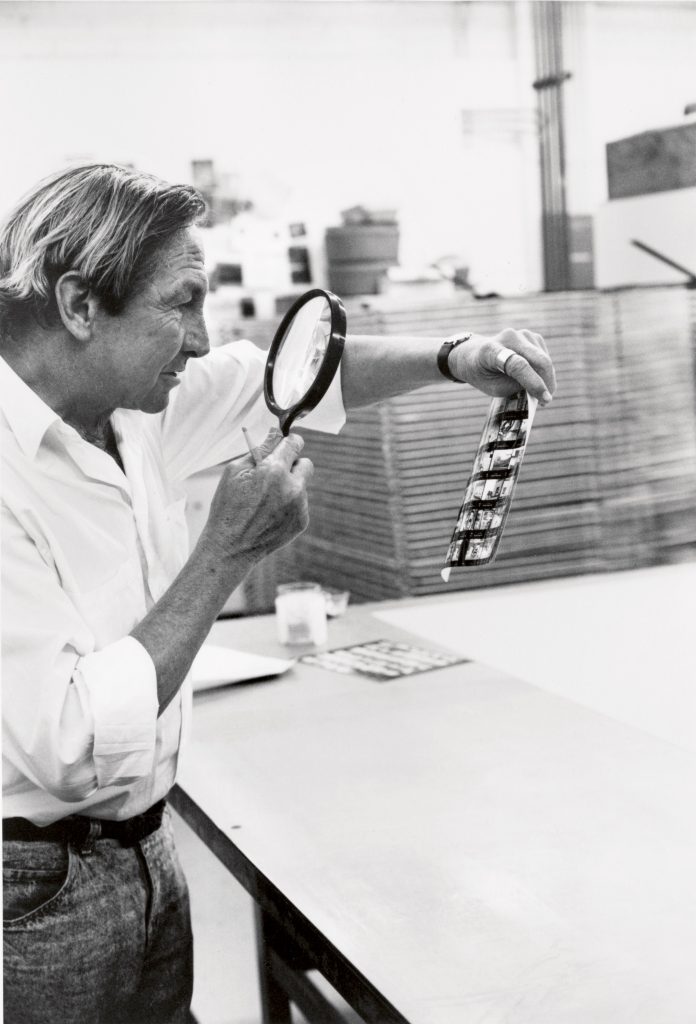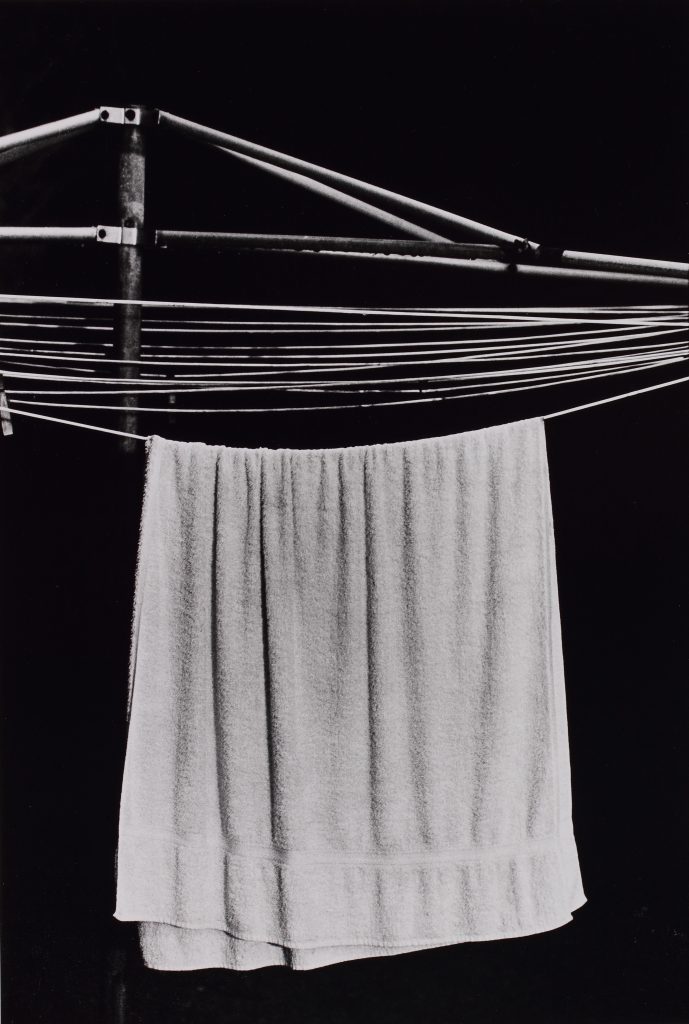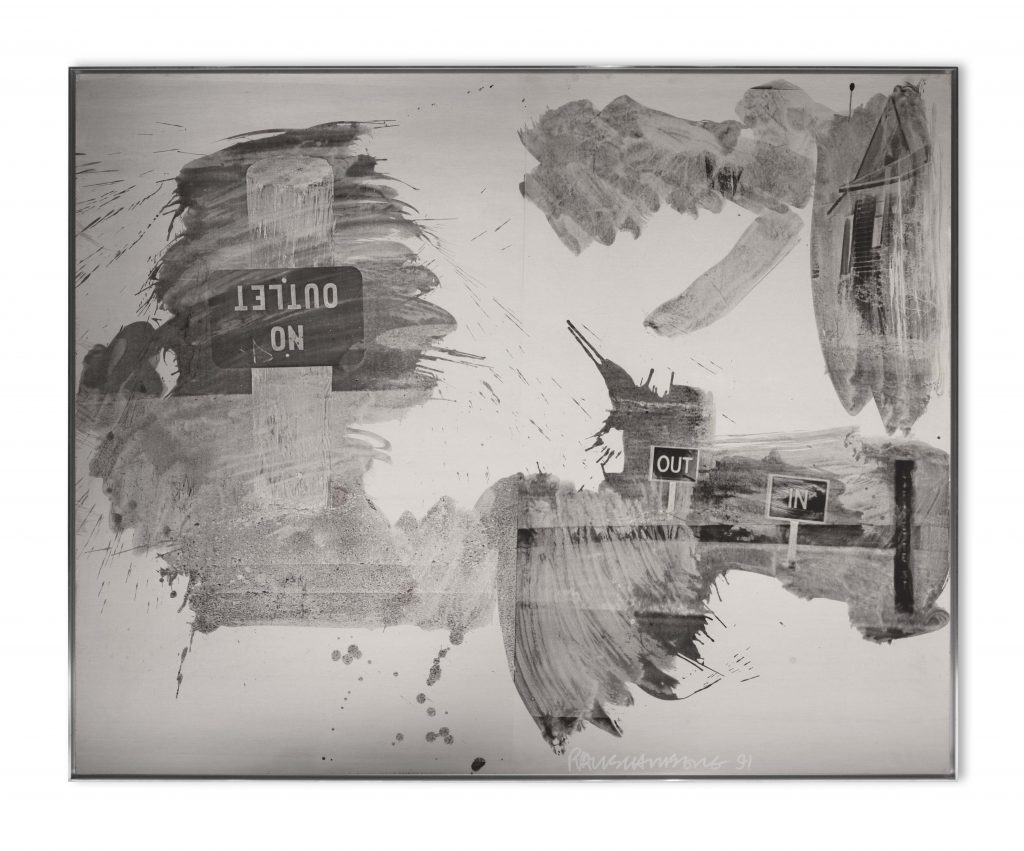Opening: Robert Rauschenberg | Night Shades and Phantoms | 22 October 2020 | Paris Marais
22 OCTOBER – 05 DECEMBER 2020
7, rue Debelleyme 75003 Paris
‘What [Rauschenberg] invented above all was […] a pictorial surface that let the world in again’. — Leo Steinberg, 1972
‘The surfaces swirl reflectively, their silvery, dreamy quality like so much brushy subconscious spillage. This is painting weather, Rauschenberg weather—instinctive, open, and pretty free.’ — David Salle, 2020

Galerie Thaddaeus Ropac Paris is pleased to present an exhibition of Robert Rauschenberg’s Night Shades and Phantoms from 1991, two series of metal paintings composed of silk-screened photographic images and gestural strokes on aluminium supports. Made during his decade-long experimentations with metal, these paintings are characterised by their grayscale palette, which ranges from the Night Shades’ painterly chiaroscuro to the Phantoms’ mirrored surfaces and ethereal translucency. Rauschenberg creates dream-like imagery which appears and disappears as a result of light, shadows and reflections across the artworks’ surfaces. The works respond to their surroundings, playing with the viewer’s perception and bringing the world into the paintings, recalling Rauschenberg’s famous maxim: ‘Painting relates to both art and life. Neither can be made. (I try to act in the gap between the two.)’. Organised in collaboration with the #robertrauschenberg Foundation, the exhibition will also present a selection of photographs by the artist used as source images for the paintings on view.

Fort Myers, Florida, 1979, Gelatin silver print, 33 x 48,3 cm (13 x 19 in), (RR 1213)
One of the most influential artists of the twentieth century, Rauschenberg revolutionised the picture plane by bringing together painting, photography and sculpture in a highly inventive way. From the mid-1980s onwards, following his sojourn in Chile, he swapped canvas for sheets of first copper, then brass, bronze and in the case of the Night Shades and Phantoms, brushed and mirrored aluminium. Rauschenberg’s use of metal can be traced back to his earlier sculptural assemblages made with industrial waste and scrap metal, as in his Elemental Sculptures (1953/59), as well as in his Combines(1954–64) and his later Gluts (1986–89/1991–94). In the Night Shades and Phantoms,Rauschenberg used metal as a pictorial device that references the reality of an industrialised world while also serving as a reflective surface that captures images, impressions and memories.

Off the Walls (Night Shade), 1991, Tarnish and silkscreen ink on brushed aluminum, 122 x 121,8 cm (48 x 48 in), (RR 1200)
For the Night Shades, Rauschenberg silkscreened images onto mirrored or brushed aluminium, applying a tarnish called Aluma Black with gestural strokes. At times the images are obscured by the tarnish, leaving expressive spills of black; at others, Rauschenberg mixed varnish with pigments which resist the tarnish and further enhance the works’ painterly qualities. For the Phantoms, Rauschenberg experimented with a different type of metal – mirrored, anodised aluminum – which repelled the tarnish, producing spectral images that appear or disappear according to one’s viewpoint. Therefore, the Phantoms developed from the Night Shades as an almost ghostly double. Their title alludes to their phantasmagoric effect, while the term Night Shades refers to a poisonous plant that bears dark berries; as a compound word it also suggests twilight or a curtain falling.

Purr (Night Shade), 1991, Tarnish and silkscreen ink on brushed aluminum, 124,5 x 185,4 cm (49 x 73 in), (RR 1201)
The images used in the silkscreening process are Rauschenberg’s own photographs, taken during his various trips across the United States and abroad between 1979 and 1991, including his travels for the Rauschenberg Overseas Culture Interchange (ROCI) project (1984–91), which aimed to achieve mutual understanding between different cultures across the globe through creative exchanges.

Driveway Detour (Night Shade), 1991, Tarnish and silkscreen ink on brushed aluminum, 122,2 x 152,3 cm (48,125 x 60 in), (RR 1188)
By bringing together disparate elements from a variety of sources and locations within the same picture plane, Rauschenberg communicates a desire for interconnectedness. The elements are combined in compositions that are poetic and witty, encouraging the viewer to create their own associations between images and words.
-Ends-
#paris #arts #culturemarketing #exibition #painting #people #galerie #thaddaeusropac #robertrauschenberg
